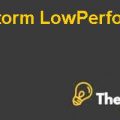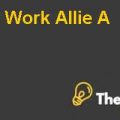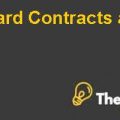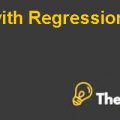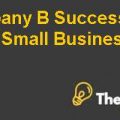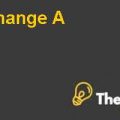Harmonic Hearing Co Case Study Analysis
Firstly, under the equity structure; there is a sufficient amount of cash at hand presented by Comet Capital, allowing Harmonic to release their new hearing aid in year one. Sales forecasts show that once the new hearing aid is introduced; sales of the existing hearing aids start to decrease slightly and then rapidly by years six and seven. The new hearing aids sales are then projected to compensate for all the lost revenue from the existing hearing aids. The extra year in the release of the hearing aid makes a tremendous effect on sales.
Another advantage to this proposal is that Cost of Goods Sold (COGS) falls to 38% from the existing 44%. In the first proposal, Burns and Irvine would have to subcontract the production of hearing aids, causing COGS to rise to 48% of revenues. In my opinion, the biggest advantage of this deal is the financial security which the duo will receive from Comet Capital. If additional funding is needed in the future; they can always ask for more money, albeit at the expense of giving up more ownership in the company. However, this would allow them to still have some ownership in the company as opposed to losing all of it if they were to default on their payments in the first proposal. Given how much money Burns and Irvine have personally contributed to the financing scheme; it is apparent that they are not overly wealthy individuals. In addition, they have minimum six years of experience, which shows that they are not very young individuals.
Taking these two factors into consideration; it can be assumed that these two individuals are not looking for a high risk investment. This makes this proposal even more sensible as it is less risky than the first scenario. There a few scenarios that could cause problems for Burns and Irvine in an equity financing deal. For example, the company is situated in a highly competitive industry, which means that companies are always looking for a competitive edge.
Another possibility is if the company decides to start investing more money in R&D. As alluded to earlier, a constant re-investment into the company is needed if the company is expected to get successful according to Burns and Irvine. A 20% increase in R&D following year one would drop the terminal value to $ 35 million, which would once again drop the Comet Capital’s IRR to below 27% and Burns and Irvine would lose their initial investment to compensate.
The same drawback keeps occurring, which is that Burns and Irvine may lose their initial investment and fail to generate positive cash flow for themselves. Again, this is the risk associated with financing by using a private equity firm, which is that your investor’s required return is more important than your own. Burns and Irvine need to be certain that if things do not go as forecasted, they are okay with losing their initial investment. However, after looking over the two proposals, both qualitatively and quantitatively; it is quite apparent that the second proposal offers more benefits and is more aligned with Burns and Irvine’s interests.
Recommendation
Recommendations regarding the two cases, I propose that Harriet Burns and Richard Irvine finance the acquisition of Harmonic Hearing Co. as part of a transaction proposed by the private equity firm “Comet Capital”. The proposal is more aligned with Burns and Irvine’s objectives. The options chosen for this purpose should be "to ensure the best combination of costs, expected return on equity and financial flexibility"...............................
This is just a sample partical work. Please place the order on the website to get your own originally done case solution.

